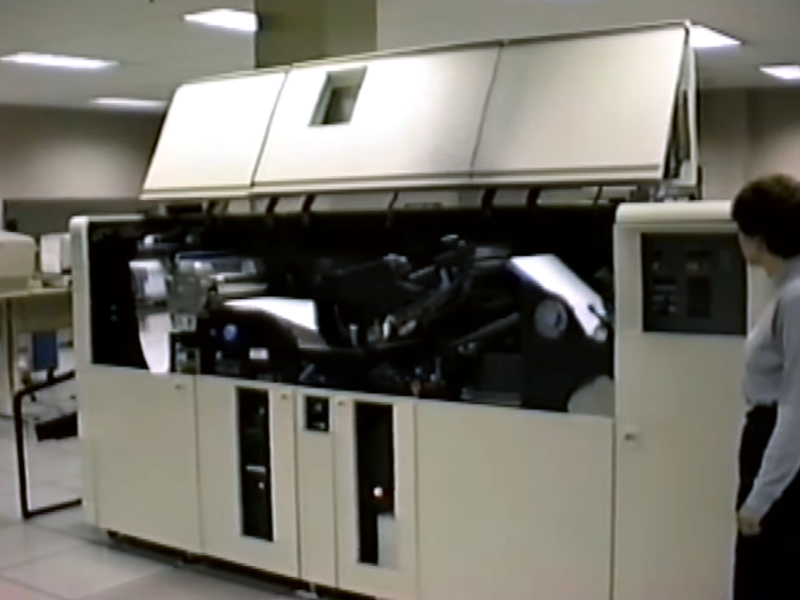Retrotechtacular: The $175,000 Laser Printer [Hackaday]

Laser printers today are cheap and readily available. But in 1976, they were the height of printing technology. The IBM 3800 was the $175,000 printer to have in that year. (Video, embedded below.) But you couldn’t have one on your desktop. Even if you could afford it, the thing is the size of a car, and we don’t even want to guess what it weighs. The printer took tractor-fed continuous form paper and could do 167 pages a minute at about 150 dots per inch (actually 180 x 144). For the record, that was as much as 1.7 miles of paper an hour!
In those days, people who would use this printer traditionally had massive banks of noisy impact printers. We imagine this device saved many data processing person’s hearing. Compared to a modern laser printer, though, it needed a lot of maintenance. For example, the initial models needed a xenon flash lamp replaced every month, although later models could go years on one bulb. Looking at some of the hardware in the video, it was probably made closer to the end of life for these printers which were made through 1999.
Big Iron and the Burster
If you didn’t get a chance to play with one of these giants, you might wonder what a burster is. This was a common computer room machine that took apart forms at perforations. For example, you might load a fanfold stack of payroll checks. The burster would split them apart after printing, leaving you with a nice stack of separate checks. It would also remove the tractor feed edges. Don’t confuse this with a decollator, which would strip carbon copies apart. You can’t use carbon paper multicopy forms with a laser printer. The printer did have a special mode where it would print multiple copies of the same page in one pass.

The printer had exciting features like the ability to print a form simultaneously as it printed the data. To do this, you installed a negative that was “printed” on the photoconductive drum with that same flash tube mentioned earlier before the laser did its work.
Laser printers have a lot in common with photocopiers. The process is the same except the copier gets an image on the drum via optics while the laser printer draws on the drum with — surprise — a laser. IBM started development with an IBM Copier I, but it couldn’t handle the throughput required for the 3800, so it was only the starting point. The machine does remind you of a copier on the inside, though. Ultimately, the printer’s 9,000 separate parts would wind up in the hands of about 10,000 IBM users.
Sub Models
The printer had several submodels. The first model had an option to print directly from a tape drive. Other models were faster, had kanji characters, and improved resolution. All the printers had a helium-neon laser, but improvements in optics pushed resolution to 240 dots per inch. The 25 milliwatt laser used an innovative low-helium-diffusion glass, meaning the tube lasted about ten times longer than comparable commercially available laser tubes in 1976.
There were many tricks and innovations used in the printer. For example, a special contrast mark appeared on every page. The printer read the mark with an LED sensor to adjust the amount of toner and to detect blank pages being printed accidentally. You can read a brochure about the modern marvel.
If you love the old big iron, there are plenty of videos out there. You can relive the days of raised floors, coffee cups, and ashtrays.

![retrotechtacular:-the-$175,000-laser-printer-[hackaday]](https://i0.wp.com/upmytech.com/wp-content/uploads/2023/10/148769-retrotechtacular-the-175000-laser-printer-hackaday.png?resize=800%2C445&ssl=1)